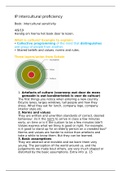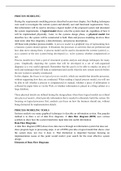Samenvatting
Samenvatting / Summary Intercultural sensitivity book (INTERCULTURAL PROFICIENCY)
This is an English summary (with sometimes Dutch translations in it) of the book Intercultural Sensitivity by Carlos Nunez 4th edition. It is written in 2019/2020 and is easy to understand and has a good overview with different colors and font sizes. It has 23 pages and explains, for example, the U...
[Meer zien]







